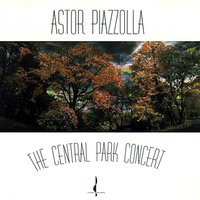| -Thank you very much
|
| -Muchas gracias.
|
| -I'll speak in two languages so you can understand me better.
|
| -Italiano!
|
| -No, italiano un posso. |
| Posso parlare italiano ma non (…) sono italiano qui.
|
| (…) Grazie!
|
| -This is the music of Buenos Aires, the New Tango.
|
| -Esta es la nueva música de Buenos Aires, el Nuevo Tango.
|
| -Questa e la nuova musica di Buenos Aires, il Nuovo Tango. |
| A bene!
|
| -We started this music in 1954.
|
| -Comenzamos en 1954
|
| -Abbiamo cominciato a mille novecento cinquanta quattro (…)
|
| -My name is Ástor Piazzolla, I was born in Argentina, I was raised in New York
|
| and my parents come from Trani, Italia. |
| Un salutto.
|
| -And this strange instrument you see here that many people say it’s an
|
| accordion, it’s not an accordion, it’s a bandoneon. |
| It’s an instrument that was
|
| invented in Germany in 1854 to play religious music in a church.
|
| It started in a church and then, a couple of years later, they took it to the
|
| whorehouses in Buenos Aires. |
| And now I’m taking it to Central Park.
|
| -It's a nice tour for this instrument.
|
| -And it’s not a joke, I’m not trying to be funny, it’s the real life of this
|
| instrument. |
| A very surrealistic life, but that’s how Tango was born.
|
| -Tango was also and was always in nightclubs, cabarets, like Jazz in New
|
| Orleans.
|
| -It wasn’t very clean at the beginning. |
| Today it’s supposed to be clean because
|
| this is clean: people, free music and love.
|
| -Thank you very much, I hope you enjoy our music." |
 Song information On this page you can read the lyrics of the song Astor's Speech , by - Astor Piazzolla. Song from the album The Central Park Concert, in the genre Латиноамериканская музыка
Song information On this page you can read the lyrics of the song Astor's Speech , by - Astor Piazzolla. Song from the album The Central Park Concert, in the genre Латиноамериканская музыка